With the closure of China’s Confucius Institutes in the US, it is time for Taiwan to fill the Mandarin teaching gap and share “a different version of history” with US students, American Institute in Taiwan (AIT) Director Brent Christensen told the Chinese Language Symposium to Support the US-Taiwan Education Initiative in Taipei yesterday.
“We have all read news stories about the closing of many of the PRC’s [People’s Republic of China] Confucius Institutes in the US. Now is the time for Taiwan to step forward and help fill this gap — not only to teach Mandarin and learn English, but to more fully tell Taiwan’s story to their American students,” Christensen said in Mandarin.
The US Department of State in August last year designated the Confucius Institute US Center as a Chinese “foreign mission” for multifaceted propaganda efforts.
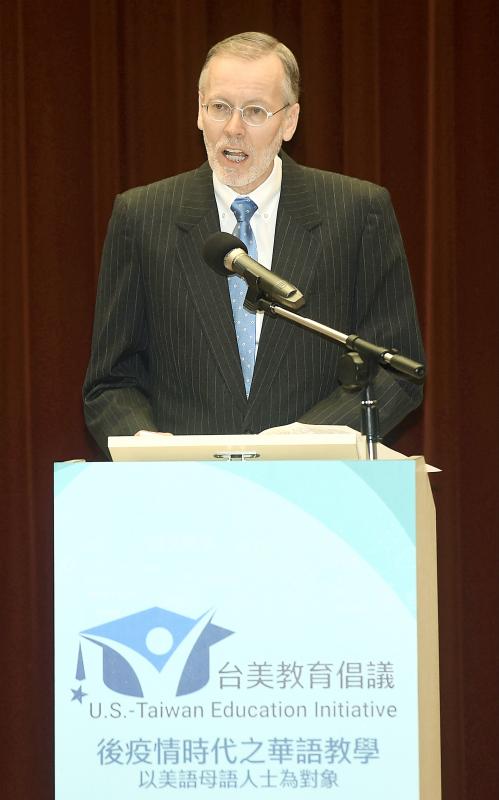
Photo: Chien Jung-fong, Taipei Times
After Taiwan and the US last month signed a memorandum of understanding on international education cooperation, both sides have agreed to expand existing programs, including the Fulbright Foreign Language Teaching Assistant Program, Christensen said.
Wishing good luck to about 60 program participants who are to teach Mandarin in the US, he told them they play a crucial role in teaching young Americans a language spoken by 1.3 billion native speakers around the world and have the opportunity to tell a different version of history than the one taught at Confucius Institutes.
‘CIVIC AMBASSADORS’
Encouraging Taiwanese instructors to serve as “civic ambassadors” and make more friends, National Security Council (NSC) Deputy Secretary-General Hsu Szu-chien (徐斯儉) said the government attaches great importance to the program, and the council since May last year has been coordinating inter-agency efforts to make plans to promote Mandarin teaching in the US and Europe.
Many senior US researchers on Chinese affairs had learned Mandarin in Taiwan during or after China’s Cultural Revolution, Department of North American Affairs Director-General Douglas Hsu (徐佑典) said, but added that when Taipei stopped funding the Stanford Center at National Taiwan University and China opened up to the world late last century, many Americans turned to China to learn the language, which resulted in their alienation from Taiwan’s views when addressing cross-strait issues.
As many prestigious universities in the US, including military academies, are establishing Mandarin-teaching departments, Taiwan should take the opportunity to tout its teaching resources online and offline, he added.
In the US, the number of K-12 students learning Mandarin exceeded 400,000 in 2017, doubling from only two years earlier, AIT Deputy Director Raymond Greene said.
US students traditionally chose Spanish as their second language, but more have been opting for Mandarin, he said.
Over the past few years, students and academics have avoided going to China, first due to environmental and then political concerns, as Beijing imposes more totalitarian restrictions on Internet use and the freedom of speech, he said.
Asked if the trend might shift back to Beijing if US-China relations improve, Greene said it is a natural shift for such people to come to Taiwan, adding that the trend would only continue to grow.
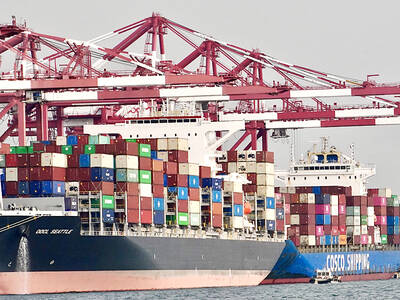
Taiwan’s exports soared to an all-time high of US$61.8 billion last month, surging 49.7 percent from a year earlier, as the global frenzy for artificial intelligence (AI) applications and new consumer electronics powered shipments of high-tech goods, the Ministry of Finance said yesterday. It was the first time exports had exceeded the US$60 billion mark, fueled by the global boom in AI development that has significantly boosted Taiwanese companies across the international supply chain, Department of Statistics Director-General Beatrice Tsai (蔡美娜) told a media briefing. “There is a consensus among major AI players that the upcycle is still in its early stage,”
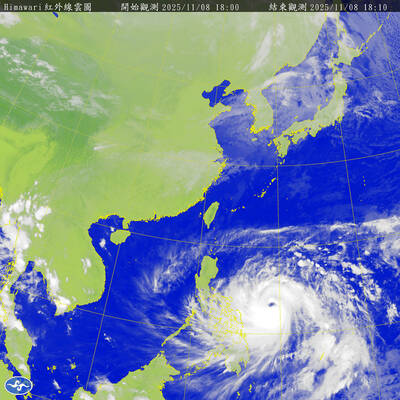
The Central Weather Administration (CWA) yesterday said it expected to issue a sea warning for Typhoon Fung-Wong tomorrow, which it said would possibly make landfall near central Taiwan. As of 2am yesterday, Fung-Wong was about 1,760km southeast of Oluanpi (鵝鑾鼻), Taiwan’s southernmost point, moving west-northwest at 26kph. It is forecast to reach Luzon in the northern Philippines by tomorrow, the CWA said. After entering the South China Sea, Typhoon Fung-Wong is likely to turn northward toward Taiwan, CWA forecaster Chang Chun-yao (張峻堯) said, adding that it would likely make landfall near central Taiwan. The CWA expects to issue a land
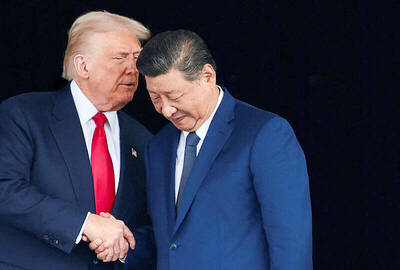
‘SECRETS’: While saying China would not attack during his presidency, Donald Trump declined to say how Washington would respond if Beijing were to take military action US President Donald Trump said that China would not take military action against Taiwan while he is president, as the Chinese leaders “know the consequences.” Trump made the statement during an interview on CBS’ 60 Minutes program that aired on Sunday, a few days after his meeting with Chinese President Xi Jinping (習近平) in South Korea. “He [Xi] has openly said, and his people have openly said at meetings, ‘we would never do anything while President Trump is president,’ because they know the consequences,” Trump said in the interview. However, he repeatedly declined to say exactly how Washington would respond in
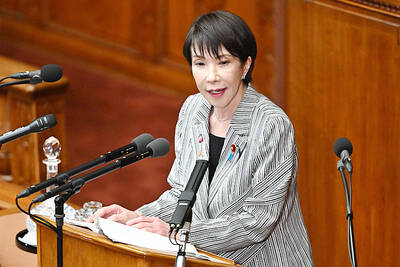
Japanese Prime Minister Sanae Takaichi said yesterday that China using armed force against Taiwan could constitute a "survival-threatening situation" for Japan, allowing the country to mobilize the Japanese armed forces under its security laws. Takaichi made the remarks during a parliamentary session yesterday while responding to a question about whether a "Taiwan contingency" involving a Chinese naval blockade would qualify as a "survival-threatening situation" for Japan, according to a report by Japan’s Asahi Shimbun. "If warships are used and other armed actions are involved, I believe this could constitute a survival- threatening